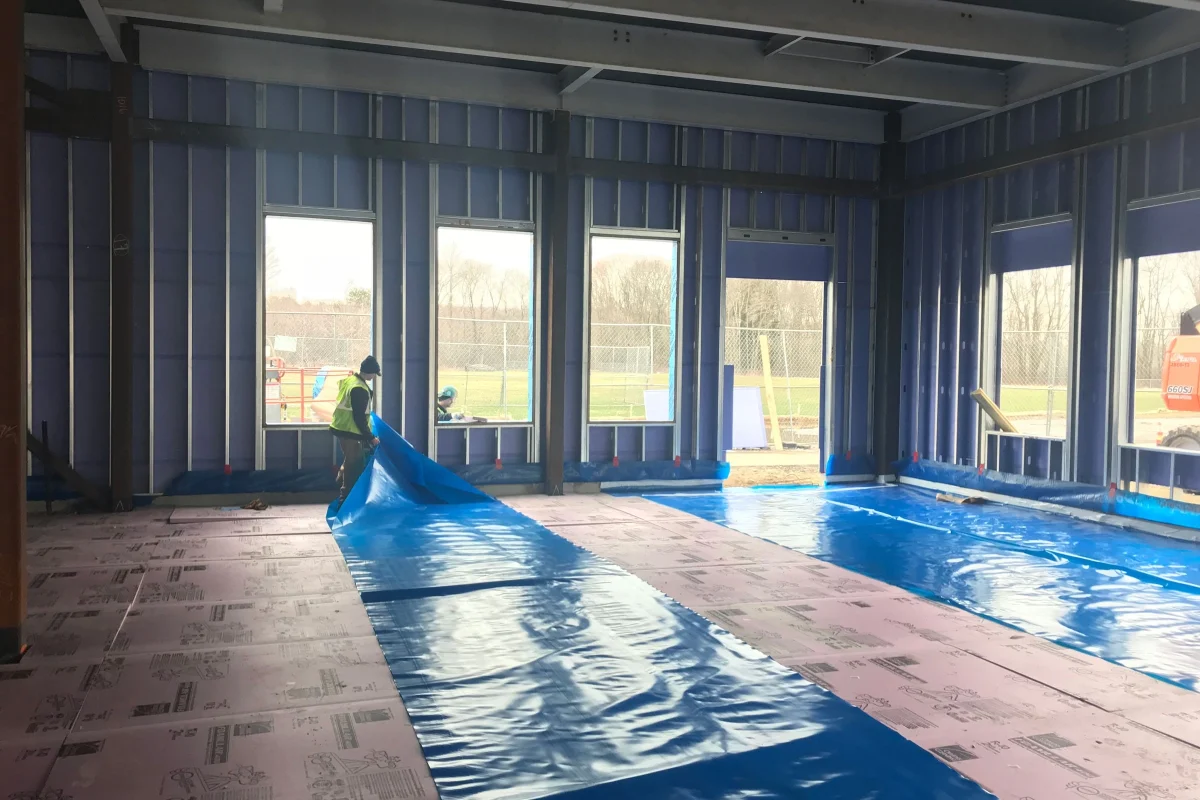Managing Moisture: A Flooring Installer’s Guide to Vapor Protection

Moisture is one of the most common causes of flooring failures, leading to warping, adhesive breakdown, mold, and structural issues. For professional flooring installers, understanding how to manage moisture and apply the right vapor barriers is essential — especially when working over concrete slabs, in basements, or with sensitive materials like engineered hardwood or epoxy coatings.
Why Moisture Control Matters
-
Prevents flooring movement and cupping
-
Protects adhesives and coatings from breaking down
-
Avoids costly callbacks and warranty issues
-
Extends the lifespan of the flooring system
“If you don’t control moisture, the floor will control you,” warns Chris V., a certified flooring inspector with over 25 years of field experience.
How Moisture Affects Different Flooring Types
| Flooring Type | Moisture Risk | Recommended Protection |
|---|---|---|
| LVP / LVT | Adhesive failure | Vapor barrier underlayment or glue |
| Engineered Hardwood | Warping or cupping | 6-mil poly or liquid moisture blockers |
| Carpet Tiles | Mold/mildew beneath | Bituminous or foil-lined vapor barriers |
| Epoxy Flooring | Blistering or bubbling | Moisture-mitigating epoxy primers |
Moisture Testing Methods
1. Calcium Chloride Test (ASTM F1869)
Measures moisture vapor emission rate (MVER) in pounds per 1,000 sq. ft. over 24 hours. Most adhesives require ≤3 lbs.
2. Relative Humidity Test (ASTM F2170)
RH probes inserted into concrete measure internal humidity. ≤75% RH is a common threshold for glue-down installations.
3. Pinless/Pin Moisture Meters
Quick check for wood subfloors, useful pre-installation but less accurate for concrete.
Types of Vapor Barriers
-
6-mil Polyethylene Sheets
-
Cost-effective and easy to install
-
Used under floating LVP or laminate over slab
-
-
Liquid Moisture Barriers
-
Applied with a roller or squeegee
-
Suitable for glue-down LVT, engineered wood, or epoxy floors
-
-
Self-Leveling Vapor Barriers
-
Combines moisture mitigation with leveling capabilities
-
Great for commercial jobs or older slabs
-
-
Foam or Film Underlayments with Integrated Barriers
-
Ideal for residential floating floors
-
Combine noise reduction and moisture resistance
-
Installation Tips
-
Overlap poly sheets by at least 6 inches and tape all seams
-
Extend vapor barriers 2–3 inches up the wall perimeter
-
Allow liquid-applied barriers to fully cure (usually 12–24 hours)
-
Don’t skip testing — even new slabs can hold excess moisture
“We test every slab, every time. You can’t rely on visual inspection,” advises Leah J., a project manager at a national flooring contractor.
Warning Signs of Moisture Problems
-
White powder (efflorescence) on concrete
-
Musty odor from subfloor or crawlspace
-
Discoloration or swelling in flooring
-
Peeling adhesive or bubbling finish
When to Recommend a Full Moisture Mitigation System
-
Slab-on-grade construction without vapor protection
-
High MVER or RH test results
-
Installations in basements or coastal regions
-
Use of moisture-sensitive adhesives or wood materials

